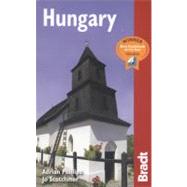
Adrian Phillips is the editorial director at Bradt Travel Guides; he has travelled regularly to Hungary for the last ten years. Jo Scotchmer is a public-relations director; she has contributed to a number of national magazines in her capacity as a freelance journalist.
| Introduction | p. 2 |
| History and Politics | p. 3 |
| Geography and Climate | p. 4 |
| People and Culture | p. 5 |
| Practical Information | p. 6 |
| Morocco | p. 7 |
| Algeria | p. 8 |
| Tunisia | p. 9 |
| Libya | |
| Languages | |
| Glossary of Architectural Terms | |
| Further information | |
| Index | |
| Table of Contents provided by Publisher. All Rights Reserved. |
The New copy of this book will include any supplemental materials advertised. Please check the title of the book to determine if it should include any access cards, study guides, lab manuals, CDs, etc.
The Used, Rental and eBook copies of this book are not guaranteed to include any supplemental materials. Typically, only the book itself is included. This is true even if the title states it includes any access cards, study guides, lab manuals, CDs, etc.
One Man and His Mop
When we first saw apulirunning down the street in Budapest, we looked around with some chagrin for the joker who was throwing mop heads around. It is one of the oddest dogs you’ll see, a compact canine whose shaggy coat forms a series of natural cords—often mistaken for dreadlocks—that reach to the ground, covering its whole body. If the dog is standing still, it can be difficult to tell whether it is wagging a tail or shaking a head. When lying flat, you’d be forgiven for thinking it was a bath mat—although it would be a poor performer in this respect, for thepulican take three days to air dry, and will walk carefully around a small puddle.
Despite appearances, thepuliis highly agile. It looks more sheep than shepherd, but was brought to Hungary by Magyar tribesmen over 1,000 years ago as a herder of livestock on the plains. The dogs gathered the stock from the villages, and drove them between grazing areas or to market.Pulikdiffered from other working dogs, such as border collies, in having to move huge numbers of sheep—often upwards of 400, many with foot rot—in tall grass. As a result, theirs was a vigorous and less-refined method than other breeds—bounding to see over the grass and yelping to spur the flock into motion. They are usually black in colour (originally to distinguish them from the sheep), highly intelligent, extremely active, and expressive watchdogs. Bred to be the sole companion of the shepherd during months of isolation, they are also affectionate and loyal.
Excerpted from Hungary by Adrian Phillips, Jo Scotchmer
All rights reserved by the original copyright owners. Excerpts are provided for display purposes only and may not be reproduced, reprinted or distributed without the written permission of the publisher.